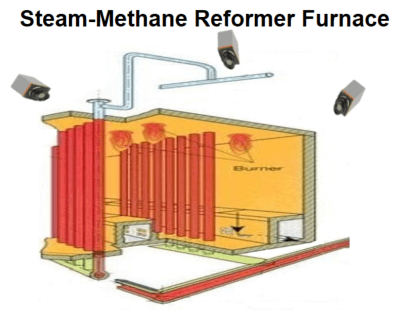The U.S. National Science Foundation (NSF) is:
…an independent federal agency created by Congress in 1950 “to promote the progress of science; to advance the national health, prosperity, and welfare; to secure the national defense…”
In 2006, the NSF funded a research project to create a step change in the performance of US manufacturing. The grant was won by professors from the University of Texas here in Austin and University of California at Los Angeles (UCLA).
Emerson’s Pete Sharpe joined senior members from other automation suppliers, manufacturing companies and academic institutions for a three-day workshop with the challenge to generate ideas that could create a step change in manufacturing efficiency on the order of the Industrial Revolution itself.What came out of this kickoff meeting was the need to make advanced automation technology more easily accessible to a broader number of manufactures, lots of low-cost sensors, increased use of models, better computing infrastructure and improve skills for manufacturing personnel. From a technology perspective, more measurements and broader use of models throughout the manufacturing lifecycle—design & prototyping, engineering, planning & scheduling, and ongoing optimization and maintenance were needed. From an infrastructure perspective, cloud-based software-as-a-service (SAAS) providers were needed with a focus on manufacturing applications.
A Smart Manufacturing platform was needed to provide common services like databases, connections to plant equipment and cybersecurity. Also, these manufacturing processes needed many more sensors to improve safety, reliability, energy & emissions and production. Easier to add wireless, “lick-and-stick” and disposable measurements were needed.
The vision that came out of this initial study was to develop an open, cloud-based marketplace for manufacturing applications that would have these characteristics:
- Open, cloud-based, available for manufacturing end users to provision an application themselves
- On-line App Store for manufacturing applications
- Capability for entrepreneurs to develop and market their applications with minimal investment
- No IT support required of end users
- Pay-per-use, so no initial capital investment
- Platform services include access to plant data and workflow engine
- MUST BE SECURE!!!
In 2013, the U.S. Department of Energy awards a grant to prototype the Smart Manufacturing platform, develop and beta test a marketplace portal, develop two testbeds that demonstrate the platform concepts, and develop generalized energy metrics to measure results from applications applied to the testbeds.
The goals of these activities were to demonstrate the viability of moving advanced manufacturing functionality to the cloud, prove that test bed projects demonstrate significant energy savings, provide outreach to software vendors and manufacturers, and identify viable commercialization plans.
Emerson worked with SMLC to implement a testbed on a steam-methane reformer furnace in Texas. The objectives for this test bed were to employ new sensors, models, optimization and operating strategies to significantly reduce waste heat by 25%.
Listen this quick 1-minute audio clip of Pete describing the cloud-based optimization strategy reading in temperatures, fuel flows, and using cameras to identify hot spots, into a model to recommend setting on 96 valves to maximize the ~400 furnace tubes used in the conversion of methane to hydrogen. The objective was to maximize the heat of each tube to their tube-skin metallurgical limits without causing damage.
The system provided recommendations to the operators to adjust the fuel valves to balance heat release across the furnace. The models showed it was possible to reduce tube-skin temperature differences between passes by more than 40%, allowing the steam methane reformer furnace to run hotter on average, resulting in a reduction in waste heat worth $300K USD per year.
In a follow up post, we’ll highlight SMLC’s creation of the Clean Energy Smart Manufacturing Innovation Institute (CESMII) and Emerson’s role as a founding member as well as the second test bed project on the largest air separation plant in the US. The objective of the second pilot is to demonstrate secure real-time, cloud-based, monitoring on the main assets of the plant and buildout the Smart Manufacturing platform and marketplace.
Stay tuned for part two and learn more about how these digital transformations are occurring in part with Plantweb digital ecosystem technologies.


